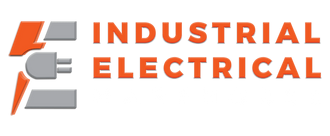When it comes to pneumatic, hydraulic, or fluid systems, proper sealing is crucial to prevent leaks, maintain pressure, and ensure long-term system reliability. The debate of NPT vs BSP threads isn't just about compatibility—it extends to how you seal these connections. Thread sealants play a critical role, and understanding which type to use with NPT or BSP fittings can mean the difference between a tight system and a leaky mess.
In this blog, we’ll dive deep into the NPT vs BSP comparison through the lens of sealants, exploring how these thread types differ, what challenges they present, and most importantly, what thread sealants to use for each.
NPT vs BSP: Understanding the Basics
Before you choose a sealant, you must understand the threads you're working with. NPT (National Pipe Thread) and BSP (British Standard Pipe) are two different threading systems that are not interchangeable. Understanding the difference is essential for selecting the right thread sealant and ensuring a leak-free fit.
What is NPT?
NPT threads are used primarily in North America and feature a tapered thread profile. This means the threads get narrower as they go deeper, creating a mechanical seal as they are torqued together. NPT fittings rely on both thread engagement and a sealant to create a leak-proof connection.
What is BSP?
BSP threads come in two types: BSPP (parallel) and BSPT (tapered). BSPP uses a bonded seal like an O-ring or washer to prevent leaks, while BSPT is similar to NPT in that it uses a taper. However, their thread angles and pitches differ. This is why the NPT vs BSP distinction is important when choosing fittings and sealants.
Thread Sealants Explained
There are three main types of thread sealants used for both NPT and BSP threads: PTFE tape, liquid thread sealant, and anaerobic sealants. Each has its advantages, limitations, and best-use scenarios.
PTFE Tape (Teflon Tape)
PTFE tape is widely used for NPT threads because it helps fill the space between tapered threads. It offers a low-cost, easy-to-apply solution that can handle moderate pressures.
Best for:
-
NPT male threads
-
Low to medium pressure systems
-
Quick, temporary fixes
Caution:
-
Not ideal for BSPP threads
-
Excess tape can shred and enter the system
Liquid Thread Sealants
These are brush-on or squeeze-on pastes that offer better coverage than PTFE tape. Many formulas also add lubrication to ease installation.
Best for:
-
NPT and BSPT threads
-
High-vibration environments
-
Permanent installations
Caution:
-
Drying time required
-
Not all formulas are compatible with plastic fittings
Anaerobic Sealants
These sealants cure in the absence of air, making them ideal for metal-to-metal threaded connections. They offer the strongest bond and are resistant to shock, pressure, and chemicals.
Best for:
-
BSPP and BSPT metal fittings
-
High-pressure systems
-
Systems subject to thermal cycling
Caution:
-
Not suitable for oxygen-rich environments
-
Require surface cleanliness for best results
NPT vs BSP: Sealant Selection by Thread Type
The sealant you choose must align with the type of thread you are sealing. The NPT vs BSP discussion is not complete without looking into what works best for each.
NPT Sealant Considerations
Because NPT threads are tapered, they rely heavily on sealants to create a tight seal. PTFE tape and liquid thread sealants are popular for NPT fittings.
-
PTFE Tape: Use 3-4 wraps clockwise. Avoid overwrapping as it can prevent full thread engagement.
-
Liquid Sealants: Apply evenly around the male thread. Ideal for permanent setups.
-
Anaerobic Sealants: Use for heavy-duty metal connections exposed to vibration and pressure.
BSP Sealant Considerations
With BSP threads, the approach depends on whether you are using BSPP or BSPT.
-
BSPP Threads: These parallel threads often rely on mechanical seals like washers. Anaerobic sealants can be used for additional protection.
-
BSPT Threads: Like NPT, tapered BSPT threads benefit from liquid or anaerobic sealants.
Application Best Practices for Sealants
Regardless of NPT vs BSP threads, application technique is critical.
-
Clean Threads: Dirt or oil can prevent proper bonding.
-
Use the Right Amount: Too much sealant can block the flow path; too little won’t seal.
-
Apply to the Right Threads: Only the male threads should be coated.
-
Avoid Backing Off: Once tightened, backing off the connection can break the seal.
Common Mistakes in Thread Sealing
-
Using PTFE Tape on BSPP Threads: Parallel BSPP threads often don’t benefit from tape and may actually leak if not used with a bonded seal.
-
Over-torquing: Both NPT and BSP threads can crack or deform under too much pressure.
-
Mismatching Thread Types: NPT vs BSP threads should never be cross-threaded. They are incompatible due to differing thread angles and pitch.
When to Use Sealant Alternatives
Some applications may call for thread sealant alternatives, especially in systems requiring frequent disassembly.
-
O-Ring Seals: Common with BSPP threads
-
Bonded Washers: Add extra sealing reliability
-
Metal Gaskets: Used in high-pressure applications where traditional sealants might degrade
Real-World Use Cases
Plumbing Systems
-
NPT with PTFE tape: Typical for residential plumbing
-
BSPP with bonded washer: Used in commercial European systems
Pneumatics and Hydraulics
-
NPT with anaerobic sealant: Vibration-heavy environments
-
BSPT with liquid sealant: Industrial automation setups
Food and Beverage Industry
-
BSPP with O-ring and food-grade sealant
-
NPT with PTFE-free liquid sealant
Conclusion: Choose the Right Sealant for NPT vs BSP Threads
Choosing the right thread sealant is just as important as choosing the correct fitting. The NPT vs BSP distinction plays a central role in how threads should be sealed. Use PTFE tape and anaerobic sealants for NPT where appropriate, and opt for bonded washers and liquid sealants for BSP depending on thread type.
With proper selection and application of thread sealants, you can ensure long-lasting, leak-free connections in any fluid or pneumatic system.
Need help selecting the right sealant or fitting? Contact our expert support team or explore our full range of thread sealants and fittings online.


